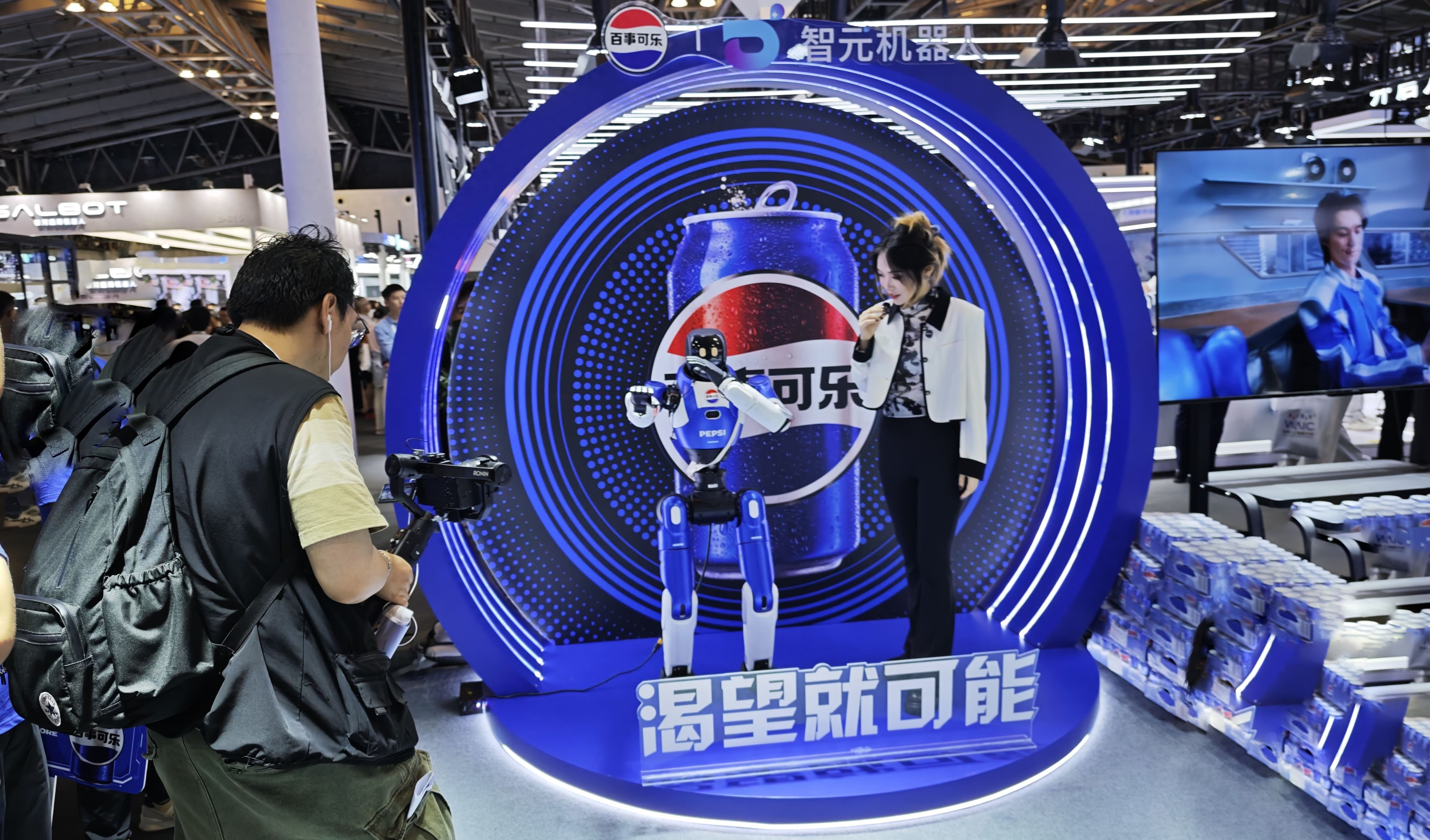TMTPOST -- As competition in the humanoid robotics industry intensifies, Chinese robotics innovator AgiBot has unveiled a series of new products and strategic initiatives, signaling its ambition to become a leading player in the emerging embodied intelligence sector.

At the company’s inaugural AgiBot Partner Conference held on August 21, AgiBot introduced its latest wheeled dual-arm robot, the AgiBot X2-W, built on the X2 platform and designed specifically for operational intelligence scenarios. Alongside the product launch, the company announced its first entrepreneurship acceleration program, AgiBot A Plan, aimed at nurturing over 50 high-potential early-stage projects and building an industry ecosystem valued at hundreds of billions of yuan within three years.
Deng Taihua, Chairman and CEO of AgiBot, emphasized that ecosystem co-construction is the key driver for scaling the embodied intelligence industry. He said the company will foster industry-wide embodied intelligent agents through open source, integration, and capital empowerment, covering application scenarios such as reception and explanation, cultural and entertainment performances, industrial manufacturing, and logistics sorting.
AgiBot is also focused on building a “unified three-intelligence” full-stack architecture for its products, combining hardware foundations with AI-driven motion intelligence, interactive intelligence, and operational intelligence. This approach underscores the company’s commitment to harmonizing both software and hardware in its robotics offerings.
On the commercialization front, AgiBot aims to ship 1,000 units by 2025, with channels contributing 30 percent of sales, and projects shipments to exceed 10,000 units in 2026. The company envisions a large-scale deployment of 100,000 general-purpose robots within three years, capable of autonomously handling hundreds of tasks.
“AI is rapidly advancing toward AGI, and 2025 will mark a turning point for the commercial development of embodied intelligent robots, which could become the next generation of mass intelligent terminals after smartphones and automobiles,” Deng added.
During a pre-event discussion, Wang Chuang, President of AgiBot’s General Business Division, highlighted that while hardware is not currently the main bottleneck in robotics, achieving human-like capabilities still requires significant improvements in components such as tactile sensing and temperature resilience. He said embodied intelligence requires the development of full-stack capabilities, rather than relying on any single aspect being “good enough.” Wang stressed that the industry remains diverse and exploratory, with multiple technological paths under development.
Founded in February 2023, AgiBot has quickly emerged as a star company in the general-purpose humanoid robotics sector. Co-founded by Peng Zhihui, a former Huawei executive now serving as CTO, the company has already completed 11 funding rounds in less than three years, attracting investments from top venture capital and strategic investors, including Gaorong Capital, Hillhouse Venture Capital, Tencent, Baidu Ventures, and SAIC Investment.
AgiBot currently operates three core business lines. The General Business Division features the Expedition series, including the Expedition A2 bipedal robot and the wheeled A2-W, designed for commercial deployment in reception, entertainment, and service industries. The X Series, formerly known as the Lingxi Business Line, comprises bipedal robots like the X1 and X2, as well as the D1 Ultra quadrupedal robot dog, aimed at educational, research, and entertainment applications. The Genie Business Line includes wheeled robots such as the Genie G1, which integrates native data acquisition and propulsion capabilities suitable for industrial and commercial tasks.
The company also launched the OmniHand 2025 series of dexterous robotic hands, offering both Agile and Professional versions to support interactive services and specialized operations. AgiBot has prioritized technology open-sourcing, releasing its AimRT robot middleware and a million-instance real-world dataset, along with the AgiOS operating system, aiming to standardize and accelerate the growth of the embodied intelligence sector. Deng disclosed that by the end of 2025, AgiBot plans to make AgiOS fully open-source, encouraging global adoption.
Wang Chuang highlighted that AgiBot’s overseas strategy focuses on Southeast Asia, Japan, South Korea, and Europe, initially targeting guided reception and entertainment scenarios. In North America, the company emphasizes research and educational partnerships to support the development of intelligent technologies. At the event, Peng Zhihui also unveiled LinkCraft, a robot motion and expression creation platform powered by AI, which allows users to create and edit robot motions and expressions with a low barrier to entry, facilitating secondary development and ecosystem growth.
Yao Maoqing, Partner and President of AgiBot’s Embodied Business Division, stressed that the focus in the next six to twelve months will be on actual commercial deployment. He said the true benchmark is whether customers are willing to pay, sign contracts, and implement applications. “We have already announced real industrial contracts, and more large-scale deployments are planned for the second half of this year,” he said.
Deng Taihua added that the future competitive advantage in robotics will lie in AI “brain” capabilities, not hardware alone. AgiBot is an algorithm-driven company, focused on embodied intelligence. With its rapid innovation, robust funding, and clear expansion strategy, AgiBot is positioning itself as a global leader in humanoid and operational intelligence robotics, setting ambitious goals for both commercial and industrial applications over the next several years.
This report highlights AgiBot’s latest product launches, ecosystem-building efforts, technological initiatives, and strategic expansion plans, reflecting the company’s vision for transforming embodied intelligence into mainstream applications across industry, commerce, and daily life.







